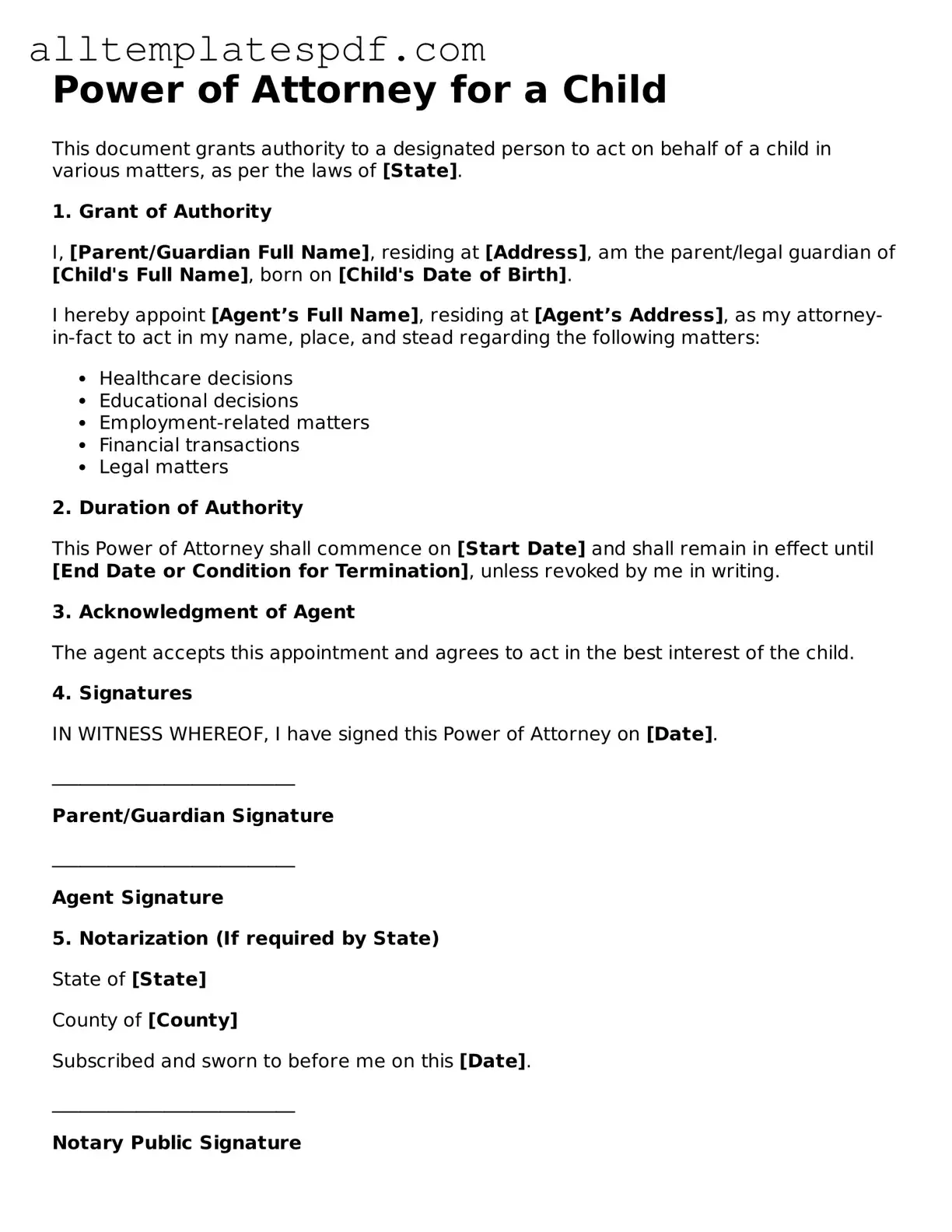Filling out a Power of Attorney for a Child form can be a straightforward process, but many people make common mistakes that can lead to complications. One frequent error is not providing accurate information about the child. Parents or guardians sometimes forget to include the child's full name, date of birth, or other identifying details. This oversight can create confusion and may even render the document invalid.
Another mistake is failing to specify the powers granted to the agent. Some individuals leave this section blank or use vague language. It’s crucial to clearly outline what decisions the agent can make on behalf of the child, whether it's medical decisions, educational choices, or travel permissions. Without clarity, the agent may not have the authority to act when needed.
People often overlook the importance of signatures. Not signing the form can invalidate it entirely. Additionally, both parents or legal guardians typically need to sign unless one parent has sole custody. In cases where both signatures are required but only one is provided, the document may not hold up in legal situations.
Another common issue arises from not dating the document. A Power of Attorney for a Child should be dated to establish when the authority begins. Without a date, it can be difficult to determine the validity of the document, especially if disputes arise later.
Some individuals forget to have the form notarized. While not always required, notarization adds an extra layer of legitimacy. It can help prevent challenges to the document's authenticity in the future. Failing to get the form notarized can lead to complications when trying to use it in urgent situations.
People also sometimes neglect to consider the duration of the Power of Attorney. It’s important to specify how long the authority will last. Without this information, the document may remain valid longer than intended, or it may expire before it is needed, leaving the child without proper representation.
Finally, not reviewing the form for errors before submission is a common mistake. Typos or incorrect information can create legal challenges later. Taking the time to double-check the form can save a lot of trouble down the road. Ensuring accuracy and clarity is essential for the Power of Attorney to function as intended.
